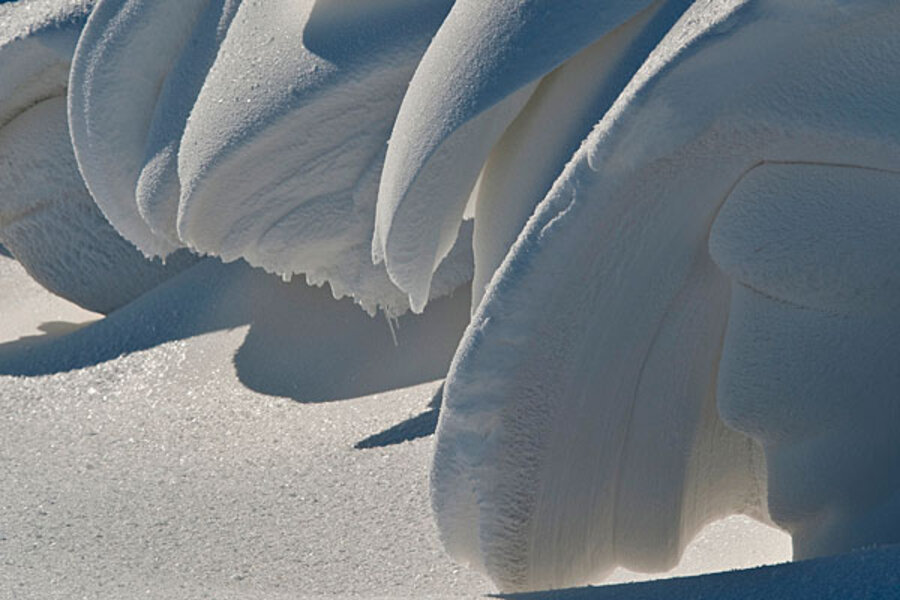Extreme rain and snow events linked to global warming, study finds
Loading...
Global warming helped drive a rise in the intensity of extreme rain and snowfall across much of the Northern Hemisphere during the last half of the 20th century, a new study has found.
The work builds on previous research that established broad trends in extreme precipitation events over the 20th century. Those studies suggested a link between climate change and heavy precipitation, based on the atmosphere's ability to hold more moisture as it warms.
But, according to the research team that conducted the new study, those studies stopped short of presenting evidence for a direct link between human-triggered global warming and extreme precipitation.
This latest study, the team says, represents the first time scientists have formally identified a link between the warming during the last half of the 20th century and the trends in extreme precipitation.
Until now,"there has not been a study that formally identified this human effect in precipitation extremes," says Francis Zwiers, a climate scientist who heads the Pacific Climate Impacts Consortium at the University of Victoria in British Columbia. This new study "provides specific scientific evidence that that is indeed the case."
The team's results are based on precipitation records as well as on results from global climate models, which the team used to see which combination of factors affecting climate yielded precipitation patterns that most closely resembled the real-world drenching.
But the study also shows a gap between models and the real world that some researchers say warrants caution in claiming to have discovered the smoking gun linking warming and the more extreme precipitation.
The extreme-precipitation trends the models display when greenhouse gases from fossil fuels are included head in the same general direction as the real-world measurements. But the the size of the change is smaller in the models than in the real world. Resolving this mismatch will be vital to increasing the credibility of such attempts at detecting global warming's imprint on patterns of intense precipitation.
The study appears in Thursday's issue of the journal Nature.
IN PICTURES: Climate change and animals
Precipitation measurements can be tricky to work with. Recording stations can move, for instance. Or one region may have fewer recording stations than another, some of which may not have been gathering data as long as others.
Indeed, the team notes that it selected the period it looked at – 1951 to 1999 – because after that period a significant number of the 6,000 recording stations whose data the team used shut down, particularly in Eurasia.
The team analyzed the maximum amount of precipitation each station recorded for a single day for each year as well as the maximum five-day amount of rain and snowfall.
They found that for that areas of the Northern Hemisphere the data covered, 65 percent of them saw increases in single-day precipitation extremes, while 61 percent saw increased in extremes during five-day events.
In addition, the team documents that on average the area covered by the study saw a 7 percent increase in the likelihood of experiencing an "average" extreme event in a given year.
"That's a substantial change over a 50-year time period," Dr. Zwiers says.
The team then used climate models to simulate 20th century climate to see if a link exists between global warming and the trends they saw in precipitation measurements.
They used model results of the climate's bahavior without the added CO2 and aerosols humans have pumped into the atmosphere. Then also ran simulations that included the additional CO2, as well as shifts in natural climate changers, such as shifts in solar radiation or aerosols from volcanic eruptions. When the team included these factors in their model runs, the simulated climate displayed the same general precipitation trends as the real-world measurements. But the models showed a far weaker effect than the real-world data showed.
For Isaac Held, a senior scientist with the National Oceanic and Atmospheric Administration's Geophysical Fluid Dynamics Laboratory in Princeton, N.J., the gap between real world and model results should inject some caution into using these particular results as an initial signal that scientists have found a smoking gun where global warming and extreme events are concerned.
In some ways, he suggests, the study's main value may rest in the model shortcomings it may reveal – shortcomings "that may limit our current ability" to provide credible evidence of a link between global warming and the extreme rain and snowfall.
"Either something is wrong with the models and they're not getting the magnitude of the extremes observed," Dr. Held says, identifying global warming as a culprit "may be suspect because something is going on" in the climate system that the models aren't capturing.
Indeed, Zwiers acknowledges that this initial attempt at hunting for global warming's signature on extreme precipitation could benefit from updated observations as well as a new generation of improved climate models coming on line. Among the aspects of climate they aim to handle with greater sophistication: clouds and aerosols. These are two aspects of climate change whose effects on climate – and its future effects on them – carry some of the largest uncertainties when trying to project future effects from global warming.
These new models "may shed light on discrepancies between the magnitude of observed changes in extreme precipitation and that of simulated changes," Zwiers says.





